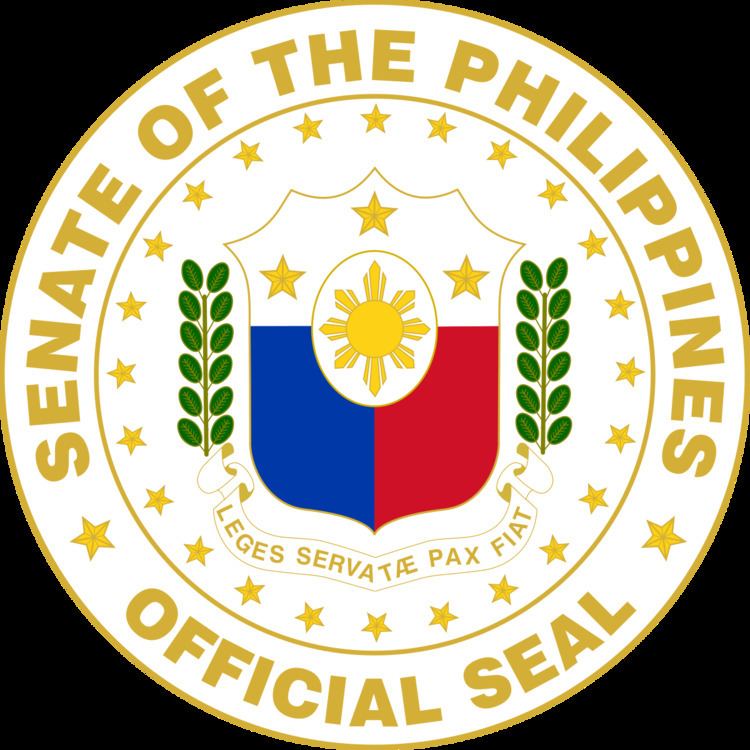Website Senate | Formation October 16, 1916 | |
 | ||
Succession Second in the Presidential Line of Succession | ||
The President of the Senate of the Philippines (Filipino: Pangulo ng Senado ng Pilipinas) or more popularly known as the Senate President, is the presiding officer and the highest ranking-official of the Senate of the Philippines and third highest and most powerful official in the Government of the Philippines. He/she is elected by the entire body to be their leader. The current Senate President of the 17th Congress of the Philippines is Aquilino Pimentel III, who was elected on July 25, 2016.
Contents
The Senate President is second in line in succession for the presidency, behind the Vice President of the Philippines and in front of the Speaker of the House of Representatives of the Philippines.
Election
The Senate President is elected by the majority of the Members of the Senate from among themselves; Since there are 24 Senators, thirteen votes (13) are needed to win the Senate Presidency, including any vacant seats or senators not attending the session. Although Senate presidents are elected at the start of each Congress, there had been numerous instances of Senate coups in which a sitting Senate President is unseated in the middle of session. Term-sharing agreements among Senators who are both eyeing the position of the Senate President also played a role in changing the leadership of the Senate, but in a smooth manner, the peaceful transition of power and this was done two times on 1999 and on 2006.
Unlike most Senate Presidents that are the symbolic presiding officers of the upper house, the Senate President of the Philippines wields considerate power by influencing the legislative agenda and has the ability to vote not just in order to break ties, although the Senate President is traditionally the last senator to vote. A tied vote, therefore, means that the motion is lost, and that the Senate President cannot cast a tie-breaking vote since that would mean that the presiding officer would have had voted twice.
Powers and duties
According to the Rule 3 of the Rules of the Senate, the Senate President has the powers and duties to:
The Senate President is also the ex officio chairman of the Commission on Appointments, a constitutional body within the Congress that has the sole power to confirm all appointments made by the President of the Philippines . Under Section 2 of Chapter 2 of the Rules of the Commission on Appointments, the powers and duties of the Senate President as its Ex-Officio Chairman are as follows:
And if other impeachable officers other than the President such as the Ombudsman is on an impeachment trial, the Senate President is the presiding officer and shall be the last to vote on the judgment on such cases according to the Senate Rules of Procedure in Impeachment Trials the Senate adopted on March 23, 2011.
In the Senate, he supervises the committees and attended its hearings and meetings if necessary and such committee reports are being submitted to his/her office.
List of Senate Presidents
The Senate was created on 1916 with the abolition of the Philippine Commission as the upper house with the Philippine Assembly as the lower house. The Senate and the House of Representatives comprised the Philippine Legislature (PL). Representation was by senatorial district; Manuel L. Quezon was elected Senator from the now-defunct 5th Legislative District.
All Senators from 1941 onwards were elected at-large, with the whole Philippines as one constituency.
Living former Senate Presidents
Currently there are seven living former Senate Presidents:
Legend: Boldface means still an incumbent Senator.
